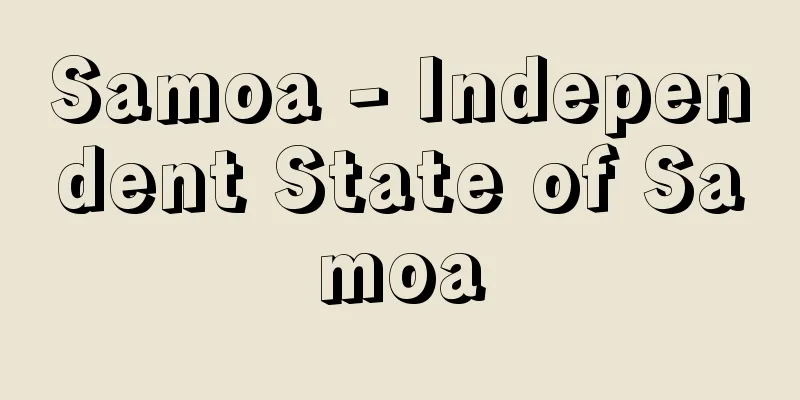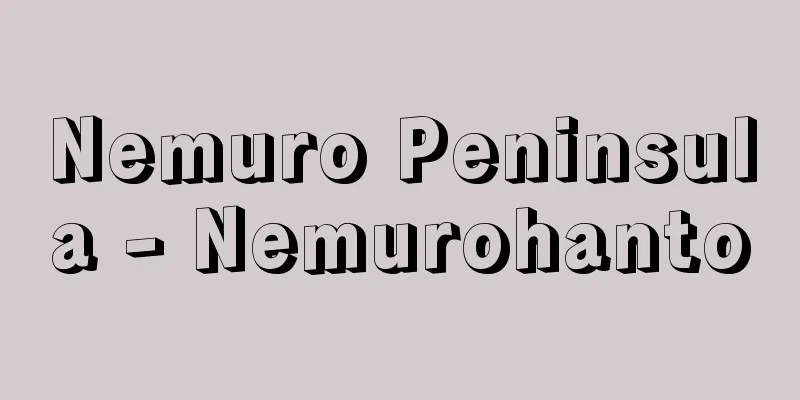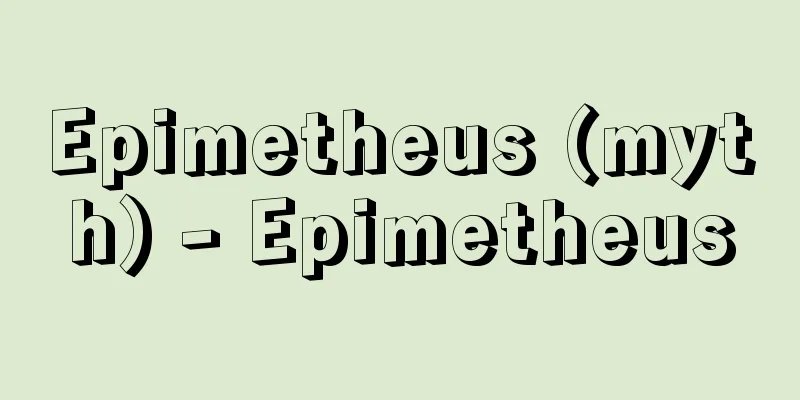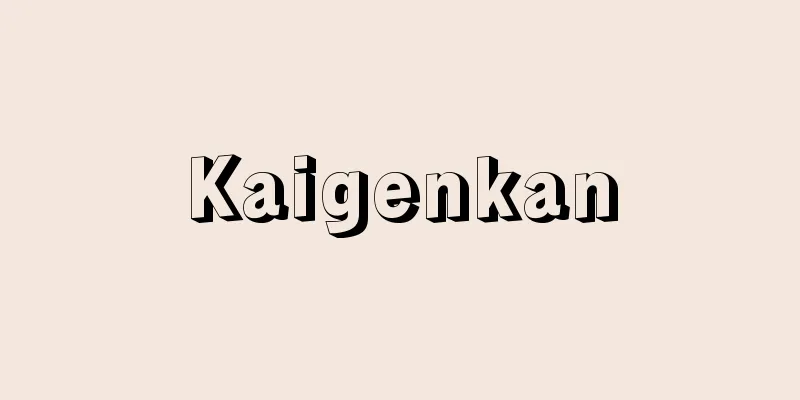Samoa - Independent State of Samoa

|
An archipelago nation in Polynesia, in the eastern hemisphere, in the central South Pacific. Official name: Independent State of Samoa. The country's land area of 2,935 square kilometers is slightly larger than Kanagawa Prefecture. Population: 185,000 (2006 estimate), 188,000 (2009, World Bank). It was a UN Trust Territory under the administration of New Zealand, but achieved independence in 1962, the earliest among the Pacific island nations. The currency used is the Tala, and Samoan and English are the official languages. The capital, Apia, is located in the center of the north coast of Upolu Island, and has a population of about 40,000. [Izumi Kobayashi] Nature and GeographyIt consists of two volcanic islands, Savai'i (1,700 square kilometers) and Upolu (1,115 square kilometers), and seven small islands separated by an 18-kilometer strait. The highest peak on Savai'i Island, Mount Silisili, is 1,856 meters high. The temperature ranges from 21 to 30 degrees Celsius, with the dry season being from May to October and the rainy season being from November to April, but it becomes much cooler during the dry season in winter when the southeasterly trade winds blow. This relatively large island still retains a strong sense of traditional Polynesian life based on the rich vegetation of the land. The date line passed diagonally between Tonga, located to the south of the island, and Tonga, which is located at almost the same longitude, so there was a full day difference in time between the two. This was done to make the date the same as American Samoa and Hawaii to the east, with which the two countries once had close ties, but as this caused major inconveniences in exchanges with New Zealand, neighboring Tonga, and Australia, with which the two countries have close ties, the date line was changed in December 2011 to match the dates of other countries in the Western Hemisphere. At the time of independence, the country was called "Western Samoa," but in 1997 it was renamed "Samoa," and in 2009 it changed from driving on the right side of the road to driving on the left side of the road, like the British style. The country has made several major national changes in the past. [Izumi Kobayashi] historyIt has strong cultural ties with its southern neighbor, Tonga, and legend has it that it was under Tongan rule for a period beginning around 900 AD. In the 18th century, French explorers and traders landed one after another. In the 19th century, many Westerners settled there. Missionaries from the UK, Italy, and the US also came one after another to spread Christianity. In the second half of the 19th century, Germany made a remarkable advance, and the three countries of Britain, the US, and Germany worked hard to gain control by incorporating the powerful Samoan chiefs who were engaged in tribal conflicts. At the end of 1899, a treaty was signed between the three countries, and the US took control of the eastern part of the Samoan archipelago, and Germany took control of the western part. Britain relinquished its rights to Samoa on the condition that Germany withdraw from the Solomon Islands and Tonga. This marked the beginning of the history of the division of the Samoan archipelago into East and West. Tutuila Island, at the eastern end of the Samoan archipelago, has since become American Samoa. Under German rule, the energy of tribal conflicts in Samoa, which had been suppressed, transformed into the Mau (dissent) movement against the government. This movement did not subside completely even when New Zealand became the administering country after Germany's defeat in World War I. The momentum for independence was not necessarily strong in the Pacific islands after World War II, but Samoa, which was one of the first to prepare for self-government and independence, had a strong Mau movement. The majority of the population is of Polynesian descent. The tall, chiseled people were reported by early Westerners to be Caucasian. Samoans have a reputation for being aggressive and combative, but they also have a charming, cheerful and friendly disposition, as evidenced by the fact that Stevenson, author of the adventure novel Treasure Island, settled there. [Izumi Kobayashi] Politics and SocietyThe government system is a constitutional monarchy in which the head of state is chosen from the heads of the four traditional tribes. As of March 2012, Tuiatua Tupua Tamasese Efi (1938-, in office since 2007) is the head of state, but at the time of independence, it was not possible to narrow it down to one of the four tribal leaders, so there was a period of two heads of state. The head of state has no real authority, and performs state acts with the approval of the parliament. The parliament is unicameral, with a parliamentary cabinet system of 49 seats, and members serve five-year terms. The government is made up of a prime minister and 12 cabinet members. In Samoa, where Polynesian traditions are still carried on, social structure is closely linked to political and economic structures. The head of an extended family (a family structure that expands when parents and their married children live together along the patrilineal or matrilineal lineage, also known as an extended family) called an 'āinga is called a matai, and the social structure is built around this matai. The 'āinga was the productive unit of traditional society and the unit of communal living. Previously, only the matai were given the right to vote, but since 1991, all citizens over the age of 21 have been given the right to vote. However, the right to run for office is still reserved only for the matai. As an exception, two seats are reserved for immigrants of European or American descent who do not have a voting base. However, in recent years, this system has become outdated. There are more and more cases of matai, who direct the production of extended families and villages and maintain order in the clan, becoming politicians or civil servants and leaving their villages for the country or going abroad. Villages without leaders need to be filled, and the number of matai continues to increase, to an estimated 25,000 to 30,000. The title of matai is registered with the government and is a social honor, so no one gives it up even if they are no longer able to perform their original duties. Thus, the conflict between modernity and tradition has become a national concern. Nevertheless, domestic politics are stable compared to neighboring countries. Tofilau Eti Alesana (1924-1999), who had served as prime minister since 1988, announced his resignation in November 1998 due to illness, but his successor, then Deputy Prime Minister and Minister of Finance Tuilaepa Lupesoliai Sailele Malielegaoi (1945- ), is still in the position of prime minister as of 2012. While the country has a strong traditional character, Christianity is widespread and the majority of the population is Christian (Protestant). School education is widespread, so everyone understands the official language, English. The country has strong ties with its former colonial master, New Zealand, and more than 1,000 Samoans immigrate to New Zealand every year under the special quota for Samoans. Education is highly institutionalized. In the eight-year primary education system, the first six years are taught in Samoan, and the seventh and eighth years in English. At the end of primary education there is a national examination, and those who pass this can advance to a five-year secondary education course, but there are two courses: a three-year course and a five-year course. Those who complete the five-year course and pass the national examination are eligible to go to university. There is a branch of the University of the South Pacific (main campus is in Fiji) within the country, but in 1984 the National University of Samoa was established, making it possible to receive higher education without going abroad. [Izumi Kobayashi] economySixty percent of the population is engaged in self-sufficiency agriculture and coastal fishing. Since the late 1990s, fish exports and tourism have begun to contribute to the economy. However, the impact of the Samoa earthquake and tsunami in September 2009 has led to a tough economic situation due to a drop in tourism revenue and a need for disaster reconstruction funds. With a small domestic market and a typical island economic structure that relies on imports for many consumer goods, the country has a chronic trade deficit but has not fallen into a serious current account deficit because of the inflow of remittances from overseas emigrants and foreign aid funds. Overseas immigrants use the Samoan immigration quota to travel to New Zealand, and then flow to Australia. Another route is to follow relatives in American Samoa to Hawaii and the West Coast of the United States. These two routes are the main routes. Nearly half of the population lives overseas, and it is estimated that the amount of money they send home is equivalent to about 20% of the gross domestic product (GDP). This makes the GNI (gross national income) per capita relatively high at $2,840 (World Bank, 2009). [Izumi Kobayashi] Relations with JapanThere is a lot of exchange between Japan and Samoa through the national sport of rugby. There are 55 Samoans in Japan (2009), many of whom are involved in rugby. There are also 61 Japanese aid workers (2009), including the Japan Overseas Cooperation Volunteers. The sentiment towards Japan is also good, and Japan is the largest donor country to Samoa. The cumulative amount of ODA (Official Development Assistance) provided by Samoa as of 2008 was 35.473 billion yen, and in 2007, a loan of 4.598 billion yen was also realized. Japanese companies are the largest companies in the country, and they manufacture car parts by employing over 2,000 local people and export them to Australia. Samoa opened an embassy in Tokyo in 2009, and the Japanese Embassy in New Zealand is also accredited to the embassy. [Izumi Kobayashi] "Yamamoto Yasushi and Yamamoto Matori, 'Economy as Ritual' (1996, Kobundo) " "Hatoyama Mikio, 'Living in Samoa, the 'Last Paradise' (2000, Fumaisha)" [References] | | | | | | | | | | [Supplementary Material] |"> Samoa flag ©Shogakukan Illustration/Shogakukan Creative "> Samoa Location Map Source: Shogakukan Encyclopedia Nipponica About Encyclopedia Nipponica Information | Legend |
|
南太平洋中部、東半球のポリネシアにある群島国家。正称サモア独立国Independent State of Samoa。国土面積2935平方キロメートルは、神奈川県よりも若干大きい程度。人口18万5000(2006年推計)、18万8000(2009年、世界銀行)。ニュージーランド施政下の国連信託統治領であったが、太平洋島嶼(とうしょ)諸国のなかではもっとも早い1962年に独立を果たした。使用通貨はタラで、サモア語と英語を公用語にしている。首都アピアはウポル島の北海岸中央に位置し、人口は約4万。 [小林 泉] 自然・地誌18キロメートルの海峡を挟んでサバイイ島(1700平方キロメートル)とウポル島(1115平方キロメートル)の二つの火山島および七つの小島からなる。サバイイ島の最高峰シリシリ山は1856メートル。気温は21~30℃で5月から10月までが乾期、11月から4月までが雨期だが、冬にあたる乾期に南東の貿易風が吹くとかなり涼しくなる。比較的領土の大きなこの島では、植生豊かな土地を基盤にした伝統的なポリネシア人の暮らしが色濃く残っている。 島の南側に位置するトンガとの間に日付変更線を斜めに通していたため、ほぼ同じ経度に位置するトンガと丸一日の時間的ずれがあった。これはかつて関係の深かった東側のアメリカ領サモアやハワイと同じ日付にするための配慮であったが、緊密関係にあるニュージーランドや隣国トンガ、オーストラリアとの交流上の不都合が大きくなったため、2011年12月に日付変更線を変えて西半球諸国と一致させた。独立時には国名を「西サモア」と称していたが、1997年に「サモア」に改称、右側通行だった道路交通を2009年にイギリス式の左側通行にするなど、これまでも国家的な大変更を幾度か実行してきた。 [小林 泉] 歴史南側の隣国トンガとの文化的結びつきが大きく、紀元900年ごろからの一時期にトンガの支配下にあったとの伝承が残っている。18世紀にはフランス人の探検家や貿易商が相次いで上陸した。19世紀に入ると数多くの西洋人が定住。また、イギリス、イタリア、アメリカからの宣教師らが次々に訪れてキリスト教の布教をした。19世紀後半になるとドイツの進出が著しく、イギリス、アメリカ、ドイツの三国は、部族抗争に明け暮れるサモアの有力族(酋)長を取り込みながら支配権獲得に奔走した。1899年末、三国間で条約が締結され、サモア諸島の東部をアメリカ、西部をドイツが統治することになった。イギリスは、ドイツがソロモン諸島およびトンガから撤退することを条件にサモア利権を放棄した。ここからサモア諸島の東西分裂の歴史が始まる。サモア諸島の東端にあるツツイラ島は、それ以来アメリカ領サモアとなっている。 ドイツ統治になると、押さえつけられていたサモア内の部族抗争のエネルギーは、政府に抵抗するマウ(異議申し立て)運動へと転化する。この運動は、第一次世界大戦でのドイツ敗戦以後に施政国となったニュージーランド時代になっても完全には収まらなかった。第二次世界大戦後の太平洋島嶼地域では、かならずしも独立機運が高まらなかったが、そのなかでいち早く自治、独立への準備を進めたサモアにはマウ運動の流れがあったからである。 国民の大半はポリネシア系である。身長が高く、彫りの深い顔立ちの人々を見た接触当初の西洋人は、彼らをコーカソイド人種だと報告していた。サモア人はアグレッシブで戦闘好きだとの評判もあるが、一方で冒険小説『宝島』の作家スティーブンソンが住み着いたことからうかがえるように、人々を魅了する陽気で友好的な気質を備えている。 [小林 泉] 政治・社会政体は国家元首が伝統4部族の長から選ばれる立憲君主制国家。2012年3月時点でトゥイアトゥア・トゥプア・タマセセ・エフィTuiatua Tupua Tamasese Efi(1938― 、在任2007~ )が元首であるが、独立時は4部族長のなかから1人に絞りきれず二人元首の時代が続いた。元首に実質権限はなく、議会の承認によって国事行為を行う。議会は一院制、議席数49の議院内閣制で議員の任期は5年。政府は首相と12人の閣僚で構成される。 ポリネシアの伝統がいまも引き継がれているサモアでは、社会構造が政治、経済構造に密接に結びついている。拡大家族(父系あるいは母系にそって親と、結婚した子どもの家族が一緒に住むことで拡大する家族形態。拡張家族ともいう)「アインガ」の家長をマタイとよび、このマタイを中心に社会の構造が成り立つ。アインガは伝統社会の生産単位であり、共同生活単位であった。以前は、マタイにだけ選挙権が与えられていたが、1991年からは21歳以上のすべての国民が投票権を得た。ただし、被選挙権はいまでもマタイだけにある。例外として、選挙地盤をもたない欧米系などの移民者のために2議席だけは別枠で確保されている。 ところが近年では、この制度が時代にあわなくなってきた。拡大家族や村の生産を指揮し、一族の秩序をつかさどるマタイが政治家や公務員となって国のために村を離れたり、海外に出たりするケースが増えたからである。指導者を欠いた村では補充が必要となりマタイ数は増え続けて2万5000人とも3万人ともいわれる。マタイ称号は政府に登録され、社会的名誉でもあるから、本来の任務が果たせなくなっても返上する者はいない。このように、近代と伝統との相克は国家的な悩みとなっている。それでも近隣諸国と比べれば内政は安定している。1988年以来首相を務めていたトフィラウTofilau Eti Alesana(1924―1999)は1998年11月に病気を理由に辞任を表明したが、その後継となった当時の副首相兼蔵相トゥイラエパTuilaepa Lupesoliai Sailele Malielegaoi(1945― )は、2012年時点でも首相の座を守っている。 伝統色が強い一方で、キリスト教が浸透し、国民の大半がキリスト教徒(プロテスタント)である。学校教育も普及しているため、公用語の英語はだれもが理解する。旧宗主国ニュージーランドとの結びつきが強く、サモア人特別枠により毎年1000人以上がニュージーランドに移民している。 教育はきわめて制度化されている。8年制の初等教育では、6年生まではサモア語で、7~8年生は英語で実施される。初等教育修了時に国家試験があり、これに合格すると5年制の中等教育課程に進学できるが、3年制と5年制の2コースに別れている。5年制コースを修了して国家試験に合格すると、大学進学資格が得られる。国内には南太平洋大学(本校はフィジー)の分校もあるが1984年に国立サモア大学が設立され、海外に行かずに高等教育を受けられるようになった。 [小林 泉] 経済国民の60%が自給的な農業や沿岸漁業に従事している。1990年代後半からは魚の輸出や観光業が経済に貢献し始めた。だが、2009年9月に発生したサモア沖大地震・津波の影響を受け、観光収入の減少や災害復興資金の需要により厳しい経済情勢となった。小規模な国内市場に加え、消費財の多くを輸入に頼るという典型的な島嶼的経済構造であるため、慢性的な貿易赤字を抱えているにもかかわらず深刻な経常赤字に陥らないのは、海外移住者からの送金や外国援助資金が流入しているからである。 海外移民はサモア人移民枠を利用してニュージーランドへ渡り、そこからオーストラリアへと流れる。もう一つはアメリカ領サモアの親戚筋をたどってハワイ、アメリカ西海岸に渡る。この二つがおもなコースとなっている。人口の半数近くが海外に居住しており、彼らの本国送金額は国内総生産(GDP)の約2割に相当すると見積もられている。これにより国民1人当りのGNI(国民総所得)は2840ドル(2009年、世界銀行)と比較的高い水準になっている。 [小林 泉] 日本との関係国民的スポーツのラグビーを通じて、日本との交流が盛んである。55名(2009)の在日サモア人の多くはラグビー関係者である。日本からも青年海外協力隊をはじめとする援助関係者61名(2009)が在留している。対日感情も良好で、サモアにとって日本は最大の援助国である。2008年(平成20)までの累積ODA(政府開発援助)供与額は354.73億円、そのほか2007年には45.98億円の借款も実現した。日系企業が国内最大企業で、2000人超の地元雇用により自動車部品を製造してオーストラリアに輸出している。サモアは2009年東京に大使館を開設、日本は駐ニュージーランド大使館が兼轄する。 [小林 泉] 『山本泰・山本真鳥著『儀礼としての経済』(1996・弘文堂)』▽『鳩山幹雄著『「最後の楽園」サモアで暮らす』(2000・風媒社)』 [参照項目] | | | | | | | | | | [補完資料] |"> サモアの国旗 ©Shogakukan 作図/小学館クリエイティブ"> サモア位置図 出典 小学館 日本大百科全書(ニッポニカ)日本大百科全書(ニッポニカ)について 情報 | 凡例 |
>>: Zamenhof - Lazaro Ludoviko Zamenhof
Recommend
Legal advice - Houritsu Soudan
This refers to the activities of lawyers, governme...
Ryukei Yano
1851 * - 1931 A journalist and newspaper owner fr...
Report of the United States Educational Mission
...The traditionally privileged concept of "...
The Eight Friends of Jingling
…This refers to the literature of the Yongming er...
Theory of Depravity - Darakuron
A critical essay by Sakaguchi Ango. Published in S...
Łódź (English spelling)
The capital of the Łockié Voivodeship in central P...
Spiral Nebula Theory
...However, this Russell-Littleton encounter theo...
Oe no Koretoki
A man of letters in the mid-Heian period. He was ...
X-ray microscope
...It is also important industrially in relation ...
Metal pipe
Metal pipes. Ingots are rolled, welded, or otherwi...
Snow blindness
Also known as snow blindness. Ophthalmia caused by...
Attempt
〘noun〙① To try something out; to make an attempt. ...
Mitsuhashi [town] - Mitsuhashi
A former town in Yamato District, southern Fukuoka...
"Suddenly Last Summer" - "Suddenly Last Summer"
...She first co-starred with Spencer Tracy in &qu...
Kansk-Achinsk (English spelling)
…Coal reserves in Siberia provide fuel for most o...









